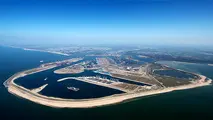Vessel operating costs to increase, Moore Stephens says

A recent survey by Moore Stephens revealed that vessel operating costs are expected to increase during this year and also the following, specifically by 2.1% in 2017 and by 2.4% in 2018. The international account and shipping consultant said that repairs & maintenance and spares are the cost categories which are expected to rise most significantly.
The survey is based on responses from key players in the international shipping industry, predominantly shipowners and managers in Europe and Asia, Moore Stephens explained.
Key Outcomes
The cost of repairs & maintenance is expected to increase by 2.0% in both 2017 and 2018
Expenditure on spares is predicted to rise by 2.0% in 2017 and by 1.9% in 2018.
Drydocking expenditure, meanwhile, is expected to increase by 1.7% and 1.8% in 2017 and 2018 respectively.
The outlay on crew wages is expected to increase by 1.7% in each of the years under review, with other crew costs thought likely to go up by 1.6% in 2017 and 1.5% in 2018.
The increase in expenditure for lubricants is expected to be 1.6% in both 2017 and 2018.
Projected increases in stores are 1.5% and 1.7% in the two years under review, while management fees are expected to rise by 0.7% and 1.0% in 2017 and 2018 respectively.
The cost of hull and machinery insurance is predicted to rise by 0.5% and 1.0% in 2017 and 2018 respectively, while for P&I insurance the projected increases are 0.7% and 1.1% respectively.
The predicted overall cost increases were highest in the offshore sector, where they averaged 4.8% and 3.8% respectively for 2017 and 2018. By way of contrast, predicted cost increases in the container ship sector were just 1.1% and 0.8% for the corresponding years.
Operating costs for bulk carriers, meanwhile, are expected to rise by 1.9% in 2017, and by 2.4% the following year, while the corresponding figures for tankers are 2.1% and 2.7%.
Respondents to the survey highlighted various areas of concern likely to result in increased operating costs over the next two years. Crew costs were high on the list, with one respondent noting,
“Crew costs are 60% of our operating expenditure, and weigh heavily when there is high demand for – but a limited supply of – manpower and when employers are required to meet increasingly onerous requirements.”
Another noted,
“Crew and insurance related expenses are the two major factors in our operating expenses but, while we expect insurance costs to fall over the next two years, we anticipate that crew costs will remain the same.”
Another still said,
“Most shipping companies, but especially those operating tankers and chemical and gas carries, are facing the prospect of increases in costs through 2018 for hiring qualified crew.”
Additionally, the survey found that new regulations are certainly going to have a major impact on the operating costs.Retrofitting vessels with technology which has not been fully vetted for compliance with existing and new regulation can destroy cashflow.
According to the survey, the predicted overall cost increases were highest in the offshore sector, where they averaged 4.8% and 3.8% respectively for 2017 and 2018. By way of contrast, predicted cost increases in the container ship sector were just 1.1% and 0.8% for the corresponding years, the consulting firm added.



